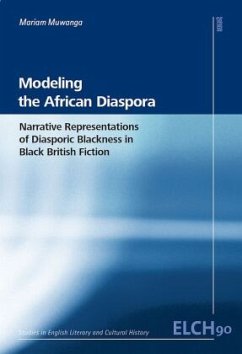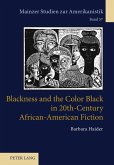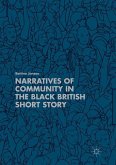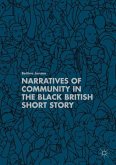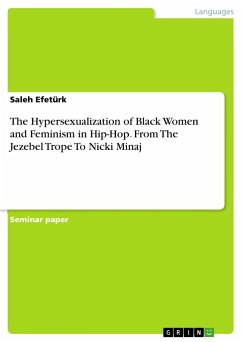Combining narratology, diaspora studies, and critical race theory, this study contributes to the emerging field of critical race narratology and advances Black British literary scholarship. It reconsiders the politics of representation by demonstrating that social conventions regarding race are constitutive of narrative form. Proposing a race-conscious approach, the study applies key tenets of critical race theory to strategies such as the semanticization of space, focalization, and characterization, revealing how the agency of Black diasporic subjects is discursively produced.
This book introduces three new concepts: wiggle space, focalization privilege, and White allies. Readings of novels by Sam Selvon (The Lonely Londoners), Bernadine Evaristo (The Emperor's Babe and Girl, Woman, Other), Andrea Levy (Small Island), Zadie Smith (White Teeth and Swing Time), and Diran Adebayo (Some Kind of Black) explore how Black protagonists manage to not only exist and survive but also thrive in a society shaped by racial conventions tied to colonialism and the gravitational pull of Whiteness.
CONTENTS
1 Introduction1
1.1Literature and the Construction of Race1
1.2 Black British Literary Scholarship: State of the Art7
1.3 Central Arguments and Premises11
1.4 Structure of the Book15
2 Diaspora: A Traveling Concept?20
2.1 Classical Notions of Diaspora: A Sociological Perspective22
2.2 Diaspora: A Constructivist Perspective27
2.3 Diaspora: Transnational Perspectives30
3 Narratology, Ideology and Race39
3.1 Narratology and Race: From Feminist Narratology to Critical Race Narratology41
3.1.1 Feminist and Postcolonial Narratologies41
3.1.2 Cultural Narratology: Literature as a Culture-Modeling System44
3.1.3 Critical Race Narratology55
3.2 A Race-Conscious Narratological Approach: 'Wiggle Space,' Focalization Privilege, and White Allies59
3.2.1 Race-Consciousness and the Tenets of Critical Race Theory60
3.2.2 Wiggle Space: Black Agency and Racialization of Space71
3.2.3 Focalization Privilege: 'Seeing' through a 'Black Gaze'74
3.2.4 Character Types and the White Ally Trope80
4 Modes of Representing Blackness in Black British Fiction86
4.1 Wiggle Space and Agency in Black British Fiction86
4.1.1 The Lonely Londoners: Black Agency and the Windrush Era86
4.1.2 Small Island: Black Presence during the Second World War98
4.1.3 The Emperor's Babe: Roman Britain and Black Agency104
4.1.4 Adopting a White Bourgeois Habitus in Some Kind of Black109
4.1.5 Securing Wiggle Space in Girl, Woman, Other114
4.2 Focalization Privilege: 'Seeing' through a 'Black Gaze'119
4.2.1 'Cultural Insiders' as Focalizers in The Lonely Londoners120
4.2.2 The 'Black Gaze' on the (Post)war Era in Small Island125
4.2.3 Some Kind of Black: Focalization Privilege and Identity129
4.2.4 White Teeth: Focalization Privilege and a Multicultural Britain137
4.2.5 Perspectival Change and Empathy in Girl, Woman, Other141
4.3 The White Ally Trope in Black British Fiction147
4.3.1 Queenie's Dilemma of Allyship in Small Island148
4.3.2 Playing 'Privilege Olympics': Allyship in Girl, Woman, Other155
4.3.3 The 'White Savior': Characterization in Swing Time160
5 Conclusion167
5.1 The Point of a Race-Conscious Narratological Approach167
5.2 An Outlook, or: Where do we go from here?170
6 Bibliography173
This book introduces three new concepts: wiggle space, focalization privilege, and White allies. Readings of novels by Sam Selvon (The Lonely Londoners), Bernadine Evaristo (The Emperor's Babe and Girl, Woman, Other), Andrea Levy (Small Island), Zadie Smith (White Teeth and Swing Time), and Diran Adebayo (Some Kind of Black) explore how Black protagonists manage to not only exist and survive but also thrive in a society shaped by racial conventions tied to colonialism and the gravitational pull of Whiteness.
CONTENTS
1 Introduction1
1.1Literature and the Construction of Race1
1.2 Black British Literary Scholarship: State of the Art7
1.3 Central Arguments and Premises11
1.4 Structure of the Book15
2 Diaspora: A Traveling Concept?20
2.1 Classical Notions of Diaspora: A Sociological Perspective22
2.2 Diaspora: A Constructivist Perspective27
2.3 Diaspora: Transnational Perspectives30
3 Narratology, Ideology and Race39
3.1 Narratology and Race: From Feminist Narratology to Critical Race Narratology41
3.1.1 Feminist and Postcolonial Narratologies41
3.1.2 Cultural Narratology: Literature as a Culture-Modeling System44
3.1.3 Critical Race Narratology55
3.2 A Race-Conscious Narratological Approach: 'Wiggle Space,' Focalization Privilege, and White Allies59
3.2.1 Race-Consciousness and the Tenets of Critical Race Theory60
3.2.2 Wiggle Space: Black Agency and Racialization of Space71
3.2.3 Focalization Privilege: 'Seeing' through a 'Black Gaze'74
3.2.4 Character Types and the White Ally Trope80
4 Modes of Representing Blackness in Black British Fiction86
4.1 Wiggle Space and Agency in Black British Fiction86
4.1.1 The Lonely Londoners: Black Agency and the Windrush Era86
4.1.2 Small Island: Black Presence during the Second World War98
4.1.3 The Emperor's Babe: Roman Britain and Black Agency104
4.1.4 Adopting a White Bourgeois Habitus in Some Kind of Black109
4.1.5 Securing Wiggle Space in Girl, Woman, Other114
4.2 Focalization Privilege: 'Seeing' through a 'Black Gaze'119
4.2.1 'Cultural Insiders' as Focalizers in The Lonely Londoners120
4.2.2 The 'Black Gaze' on the (Post)war Era in Small Island125
4.2.3 Some Kind of Black: Focalization Privilege and Identity129
4.2.4 White Teeth: Focalization Privilege and a Multicultural Britain137
4.2.5 Perspectival Change and Empathy in Girl, Woman, Other141
4.3 The White Ally Trope in Black British Fiction147
4.3.1 Queenie's Dilemma of Allyship in Small Island148
4.3.2 Playing 'Privilege Olympics': Allyship in Girl, Woman, Other155
4.3.3 The 'White Savior': Characterization in Swing Time160
5 Conclusion167
5.1 The Point of a Race-Conscious Narratological Approach167
5.2 An Outlook, or: Where do we go from here?170
6 Bibliography173

